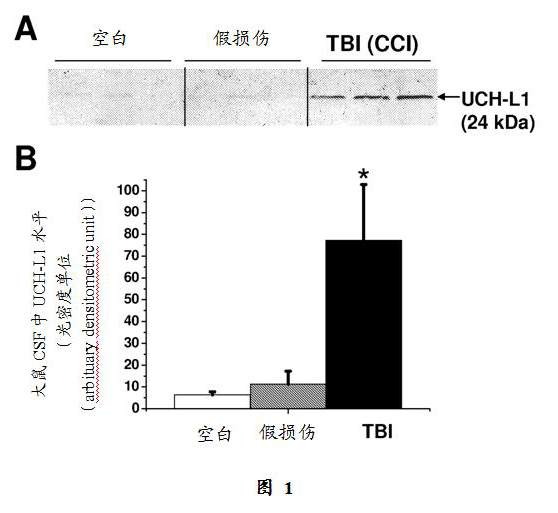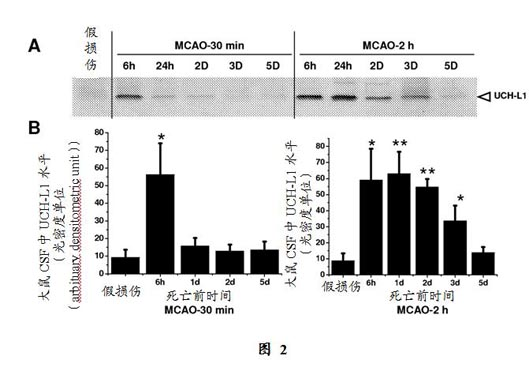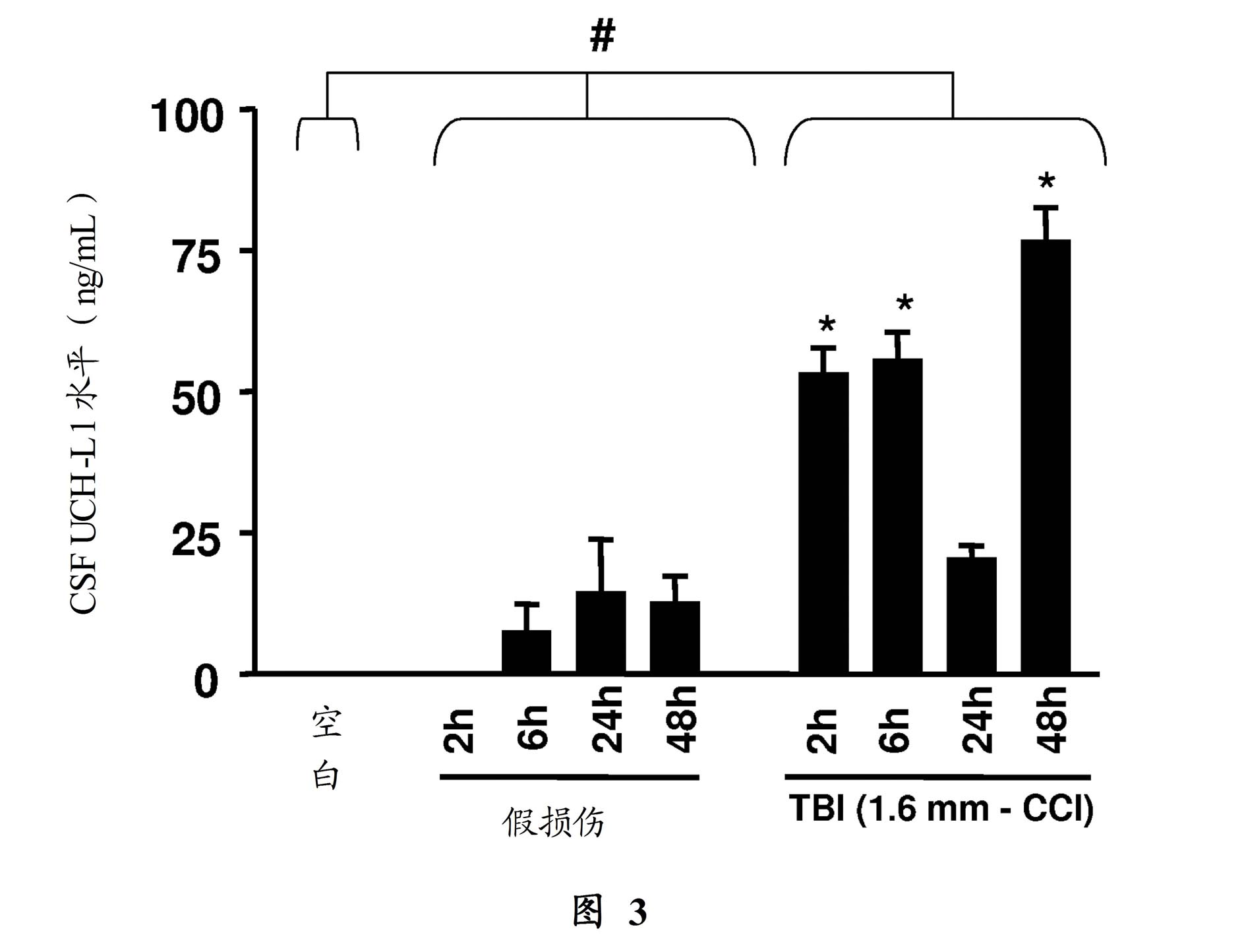Process to diagnose or treat brain injury
A technology of brain injury and treatment, which is used in the field of diagnosis or treatment of brain injury, and can solve problems such as brain injury that is difficult to treat effectively
- Summary
- Abstract
- Description
- Claims
- Application Information
AI Technical Summary
Problems solved by technology
Method used
Image
Examples
example 1
[0094] Example 1: Materials for biomarker analysis. Sodium Bicarbonate, (Sigma Cat#: C-3041), Blocking Buffer (Startingblock T20-TBS) (Pierce Cat#: 37543), Tris Salt Buffer with Tween 20 (TBST; Sigma Cat#: T-9039 ). Phosphate buffered saline (PBS; Sigma Cat#: P-3813); Tween 20 (Sigma Cat#: P5927); Super TMB ELISA (Pierce Cat#: 34028); and Nunc maxisorp ELISA plates (Fisher). Monoclonal and polyclonal UCH-L1 antibodies were self-made or obtained from Santa Cruz Biotechnology, Santa Cruz, CA. Antibodies for alpha-II spectrin and degradation products and MAP2 are available from Santa Cruz Biotechnology, Santa Cruz, CA. Labels for antibodies of many subtypes are available from Invitrogen, Corp., Carlsbad, CA. Protein concentrations in biological samples were determined with standard albumin using the bicinchoninic acid microprotein assay (Pierce Inc., Rockford, IL, USA). All other necessary reagents and materials are known and readily available to those skilled in the art.
example 2
[0095] Example 2: In vivo model of TBI injury model: A controlled cortical impact (CCI) device was used to prepare a rat TBI model as previously described (Pike et al, 1998). Adult male (280-300g) SD rats (Sprague-Dawley rats) (Harlan: Indianapolis, IN) were used at 1:1 O 2 / N 2 Anesthetize with 4% isoflurane in O carrier gas (4 min), then maintain in 2.5% isoflurane in the same carrier gas. Core body temperature was continuously monitored with a rectal thermistor probe and maintained at 37±1°C by placing an adjustable temperature-controlled heating pad underneath the rat. Animals were fixed on a stereotaxic frame in a prone position and secured with ear and incisor rods. A unilateral (ipsilateral to the impingement site) craniotomy (7 mm in diameter) was performed along the midline incision and soft-tissue reflection, adjacent to the midline, between the bregma and lambda. The dura mater remains intact over the cortex. Brain injury was produced by impacting the right (ips...
example 3
[0096] Example 3: Middle cerebral artery occlusion (MCAO) injury model: Rats were cultured under isoflurane anesthesia (5% isoflurane via inspiratory chamber, then 2% isoflurane via nose cone). The arterial artery (CCA) was exposed by midline dissection of the neck at the bifurcation of the external carotid artery (ECA) and internal carotid artery (EIA). The ICA is located rostrally posterior to the pterygopalatine branch, and the ECA is ligated and severed at its lingual and maxillary bifurcation. A 3-0 nylon suture is then introduced into the ECA through an incision over the ECA stump (the path of the suture is monitored visually through the vessel wall) and advanced through the carotid canal to approximately 20 mm from the carotid bifurcation until it rests anterior to the brain A narrowing of the artery blocks the source of the middle cerebral artery. The skin incision is then closed and the endovascular sutures left in place for 30 minutes or 2 hours. The rat is then br...
PUM
 Login to View More
Login to View More Abstract
Description
Claims
Application Information
 Login to View More
Login to View More - R&D
- Intellectual Property
- Life Sciences
- Materials
- Tech Scout
- Unparalleled Data Quality
- Higher Quality Content
- 60% Fewer Hallucinations
Browse by: Latest US Patents, China's latest patents, Technical Efficacy Thesaurus, Application Domain, Technology Topic, Popular Technical Reports.
© 2025 PatSnap. All rights reserved.Legal|Privacy policy|Modern Slavery Act Transparency Statement|Sitemap|About US| Contact US: help@patsnap.com



